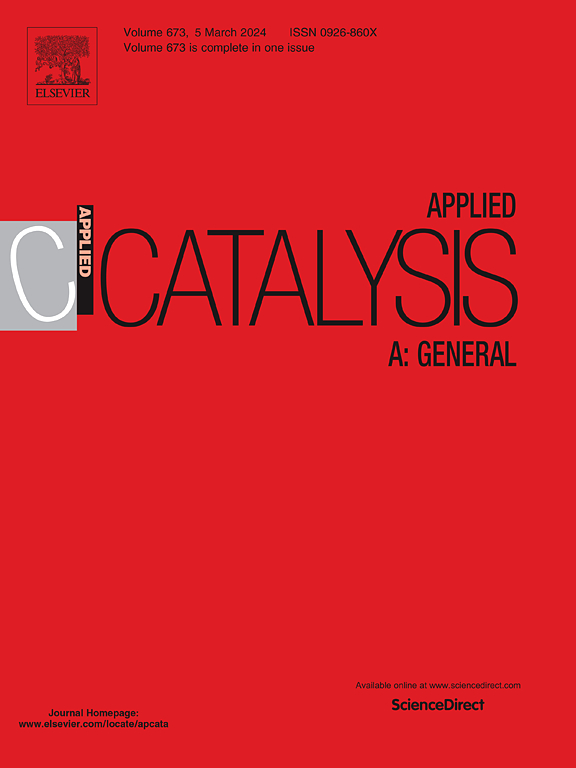异相Fe-Ce@SiC/H2O2体系的构建及其对NO的去除
IF 4.7
2区 化学
Q2 CHEMISTRY, PHYSICAL
引用次数: 0
摘要
传统的SCR脱硝技术在适应低温高湿烟气环境时往往遇到困难。因此,开发一种既经济又高效的低温脱硝工艺至关重要。本文构建了一个Fe-Ce@SiC/H2O2非均相氧化吸附体系。系统地考察了该体系对NO的去除性能。结果表明,与酸性条件相比,碱性条件下的Fe-Ce@SiC/H2O2非均相体系对NO的去除效果更好。其中,在最优实验条件下,Fe-Ce@SiC/H2O2体系对NO的去除率可达87.1 %。当循环水流量进一步增加到600 ml/min时,NO可以被完全去除。结合SEM、XRD、BET、XPS、EPR、气液相产物分析、自由基猝灭实验、电化学测试等结果,提出了可能的反应机理。Fe和Ce之间的电子转移和共催化促进了金属活性位点的再生,因此,在Fe-Ce@SiC的催化下,H2O2被增强,产生更多的•O2-自由基。这些•O2-自由基是碱性条件下NO氧化的主要活性物质,而•OH自由基和1O2的活性相对较低。净化后的NO在吸收液中主要转化为NO3-和少量NO2-。研究结果不仅进一步完善了非均相Fenton系统脱除NOx的理论体系,而且拓展了该技术在烟气脱硝领域的适用性。本文章由计算机程序翻译,如有差异,请以英文原文为准。
Construction of heterogeneous Fe-Ce@SiC/H2O2 system and its NO removal
Conventional SCR denitrification technology often encounters difficulties in adapting to the flue gas scenarios characterized by low temperatures and high moisture. Therefore developing a low-temperature denitrification process that is both cost-effective and efficient is crucial. In this paper, a heterogeneous Fe-Ce@SiC/H2O2 oxidation-absorption system was constructed. The NO removal performances of this system were systematically investigated. The results show that, compared with the acidic conditions, the heterogeneous Fe-Ce@SiC/H2O2 system under the alkaline conditions exhibited better NO removal performance. Specifically, under optimal experimental conditions, the removal efficiency of NO in the Fe-Ce@SiC/H2O2 system could reach up to 87.1 %. When the circulating water flow rate was further increased to 600 ml/min, NO could be completely removed. Combined with the results of SEM, XRD, BET, XPS, EPR, the gas-liquid phase products analysis, and the radical quenching experiments, the electrochemical test, the possible reaction mechanism was proposed. The electron transfer and co-catalysis between Fe and Ce facilitated the regeneration of the metal active sites, therefore, H2O2 was enhanced to produce more •O2- radicals under the catalysis of Fe-Ce@SiC. These •O2- radicals are the principal active species for NO oxidation under the alkaline conditions, whereas •OH radicals and 1O2 are relatively less active. The purified NO is mainly converted into NO3- and a small amount of NO2- in the absorption solution. The research results not only further improve the theoretical system of NOx removal by the heterogeneous Fenton system, but also expand the applicability of this technology in the field of flue gas denitrification.
求助全文
通过发布文献求助,成功后即可免费获取论文全文。
去求助
来源期刊

Applied Catalysis A: General
化学-环境科学
CiteScore
9.00
自引率
5.50%
发文量
415
审稿时长
24 days
期刊介绍:
Applied Catalysis A: General publishes original papers on all aspects of catalysis of basic and practical interest to chemical scientists in both industrial and academic fields, with an emphasis onnew understanding of catalysts and catalytic reactions, new catalytic materials, new techniques, and new processes, especially those that have potential practical implications.
Papers that report results of a thorough study or optimization of systems or processes that are well understood, widely studied, or minor variations of known ones are discouraged. Authors should include statements in a separate section "Justification for Publication" of how the manuscript fits the scope of the journal in the cover letter to the editors. Submissions without such justification will be rejected without review.
 求助内容:
求助内容: 应助结果提醒方式:
应助结果提醒方式:


